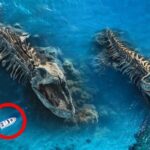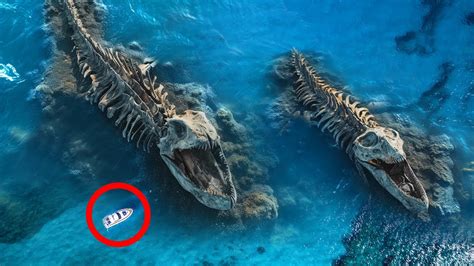
An invasive plant known as hydrilla is rapidly spreading across the United States, prompting experts to issue urgent warnings about its potential to devastate aquatic ecosystems and impact recreational activities. Characterized by its aggressive growth and resilience, hydrilla poses a significant threat to native flora and fauna, as well as water-based economies.
Hydrilla, scientifically known as Hydrilla verticillata, is a submersed aquatic plant native to Asia that has become one of the most troublesome invasive species in the U.S. According to the United States Geological Survey (USGS), hydrilla was first introduced into Florida in the 1950s through the aquarium trade and has since spread to numerous states across the country. Its rapid growth rate, ability to reproduce from fragments, and tolerance of varying environmental conditions make it exceptionally challenging to control.
The Alarming Spread of Hydrilla
Hydrilla’s aggressive growth habits enable it to quickly dominate aquatic environments. The plant forms dense mats on the water’s surface, blocking sunlight and impeding the growth of native aquatic plants. This, in turn, disrupts the food chain and negatively affects fish and other aquatic organisms that rely on these plants for food and habitat. The thick mats can also hinder recreational activities such as boating, fishing, and swimming.
Experts are particularly concerned about the plant’s ability to spread through fragmentation. Even small pieces of hydrilla can take root and establish new colonies, making it easily dispersed by boats, trailers, and natural water flow. “Hydrilla spreads primarily through fragmentation,” explains Dr. Alison Fox, an aquatic plant specialist at the University of Florida’s Institute of Food and Agricultural Sciences. “A tiny fragment of hydrilla can start a whole new infestation, which is why it’s so difficult to control.”
The plant’s adaptability allows it to thrive in a wide range of aquatic environments, including lakes, rivers, ponds, and canals. It can tolerate low light conditions and a variety of water chemistries, enabling it to outcompete native species even in less-than-ideal habitats. Its tuber-like structures, called turions, also enable it to survive through winter and resprout in the spring, further contributing to its persistence.
Ecological and Economic Impacts
The ecological consequences of hydrilla infestations are far-reaching. The plant’s dense mats reduce biodiversity by shading out native aquatic plants, altering nutrient cycles, and decreasing oxygen levels in the water. This can lead to fish kills and the decline of other aquatic organisms. The altered habitat also favors the proliferation of certain types of algae, which can further degrade water quality.
The economic impacts of hydrilla are also substantial. Infestations can impede water flow in irrigation canals and drainage ditches, increasing the risk of flooding and reducing the efficiency of water management systems. The plant’s interference with recreational activities can also negatively impact tourism and property values.
Controlling hydrilla infestations requires significant financial resources. Management strategies typically involve a combination of chemical, biological, and mechanical control methods. Chemical herbicides can be effective in reducing hydrilla populations, but their use can also have unintended consequences for non-target species. Biological control agents, such as herbivorous insects and fish, offer a more sustainable approach but may not provide immediate relief from infestations. Mechanical removal, such as harvesting or dredging, can be effective in localized areas but is labor-intensive and costly.
Management and Control Efforts
Various state and federal agencies, as well as local organizations, are actively involved in hydrilla management and control efforts. The U.S. Army Corps of Engineers, for example, conducts hydrilla control programs in numerous waterways across the country. State agencies, such as the Florida Fish and Wildlife Conservation Commission, also have extensive programs aimed at preventing the spread of hydrilla and managing existing infestations.
One of the key components of hydrilla management is early detection and rapid response. Regular monitoring and surveillance are essential for identifying new infestations before they become widespread. Once hydrilla is detected, prompt action is needed to prevent it from spreading further. This may involve implementing control measures such as herbicide applications or mechanical removal, as well as educating the public about the importance of preventing the spread of hydrilla.
Research is also ongoing to develop new and improved methods for controlling hydrilla. Scientists are exploring the potential of using new herbicides, biological control agents, and integrated management strategies to combat the plant’s spread. The goal is to find solutions that are both effective and environmentally sustainable.
Public Awareness and Prevention
Public awareness is crucial for preventing the spread of hydrilla. Boaters, anglers, and other water recreationists can play a significant role in preventing the plant from being transported to new locations. It is essential to inspect boats, trailers, and other equipment for any signs of hydrilla before entering and leaving waterways. Any plant fragments should be removed and disposed of properly, away from water bodies.
Education campaigns can help to raise awareness about the risks of hydrilla and promote responsible behavior among water recreationists. These campaigns can include brochures, websites, public service announcements, and educational programs. By educating the public about the importance of preventing the spread of hydrilla, it is possible to reduce the risk of new infestations and protect aquatic ecosystems.
The Role of Climate Change
Climate change may also be exacerbating the problem of hydrilla infestations. Warmer temperatures and changes in precipitation patterns can create more favorable conditions for hydrilla growth and spread. Rising water temperatures, for example, can extend the growing season for hydrilla, allowing it to produce more biomass and expand its range. Changes in precipitation patterns can also affect water levels and nutrient availability, which can impact hydrilla growth and its ability to compete with native species.
The potential impacts of climate change on hydrilla infestations highlight the need for a proactive and adaptive approach to management. This includes developing strategies that can mitigate the effects of climate change on aquatic ecosystems and improve the resilience of native plant communities. It also involves monitoring and assessing the impacts of climate change on hydrilla infestations and adjusting management strategies accordingly.
Looking Ahead: A Collaborative Approach
Addressing the threat of hydrilla requires a collaborative approach involving government agencies, research institutions, local organizations, and the public. By working together, it is possible to develop and implement effective strategies for preventing the spread of hydrilla and managing existing infestations. This includes investing in research, monitoring and surveillance, public education, and control efforts.
The ongoing battle against hydrilla serves as a reminder of the importance of preventing the introduction and spread of invasive species. Invasive species can have devastating impacts on ecosystems, economies, and human health. By taking steps to prevent their spread, it is possible to protect the environment and safeguard our future.
Detailed Impacts and Consequences
Hydrilla’s impact extends far beyond just ecological disruption. The dense mats of hydrilla create several negative consequences that affect various sectors:
- Navigation Obstruction: Hydrilla’s dense growth can impede or completely block navigation channels. This impacts commercial shipping, recreational boating, and even emergency services that rely on water access. Dredging these waterways becomes necessary, incurring significant costs.
- Irrigation and Water Supply Interference: The plant can clog irrigation systems, reducing the efficiency of water delivery to agricultural lands. This can lead to crop losses and increased costs for farmers. Similarly, hydrilla can block water intakes for municipal water supplies and power plants, requiring expensive maintenance and potentially disrupting service.
- Flood Control Impairment: Dense hydrilla growth can impede the flow of water in drainage canals and rivers, increasing the risk of flooding. This can cause property damage and endanger lives, especially during heavy rainfall events. Regular removal of hydrilla is necessary to maintain the effectiveness of flood control infrastructure.
- Mosquito Proliferation: While hydrilla might provide some habitat for beneficial insects, the dense mats also create stagnant water areas ideal for mosquito breeding. This can lead to increased mosquito populations and a higher risk of mosquito-borne diseases, such as West Nile virus and Zika virus.
- Property Value Decline: The presence of dense hydrilla infestations can reduce property values, particularly for waterfront properties. The plant makes water access difficult, reduces aesthetic appeal, and diminishes the overall recreational value of the property.
- Reduced Fishing and Recreational Opportunities: Anglers find it difficult to fish in waters choked with hydrilla. Boating, swimming, and other water sports are also severely hampered. This can negatively impact tourism-dependent economies.
- Livestock Poisoning: In some instances, hydrilla can accumulate toxins produced by cyanobacteria (blue-green algae) that grow within the hydrilla mats. If livestock consume hydrilla containing these toxins, they can become ill or even die.
- Changes in Water Chemistry: As hydrilla decomposes, it consumes oxygen, leading to hypoxic or anoxic conditions in the water. This can kill fish and other aquatic organisms. The decomposition process also releases nutrients, which can fuel further algae blooms and exacerbate water quality problems.
- Loss of Native Plant Diversity: The aggressive growth of hydrilla outcompetes native aquatic plants, leading to a decline in biodiversity. This can have cascading effects throughout the food web.
- Habitat Alteration: The dense mats of hydrilla alter the physical structure of aquatic habitats, making them unsuitable for many native species. This can lead to a shift in the composition of aquatic communities.
Control Methods in Depth
Controlling hydrilla requires a multifaceted approach, often involving a combination of methods to achieve the best results. Each method has its advantages and disadvantages, and the most appropriate strategy depends on the specific characteristics of the infestation and the surrounding environment:
- Chemical Control (Herbicides): Herbicides are a common tool for managing hydrilla infestations. Several herbicides are approved for aquatic use, including fluridone, endothall, and copper-based compounds. These chemicals work by interfering with the plant’s metabolic processes, leading to its death. However, herbicide use can have unintended consequences, such as harming non-target plants and affecting water quality. Careful application and monitoring are essential to minimize these risks.
- Fluridone: A systemic herbicide that inhibits carotenoid biosynthesis, leading to chlorophyll degradation and plant death. It is effective against hydrilla but can be slow-acting.
- Endothall: A contact herbicide that disrupts cell membrane function. It provides faster control than fluridone but requires higher concentrations and more frequent applications.
- Copper-based herbicides: Copper sulfate and chelated copper products are used to control hydrilla by disrupting enzyme activity. However, copper can be toxic to aquatic organisms at high concentrations.
- Biological Control: Biological control involves using natural enemies, such as insects or fish, to control hydrilla populations. This approach is generally considered more environmentally friendly than chemical control, but it may not provide immediate relief from infestations.
- Hydrilla Leaf-Mining Fly (Hydrellia pakistanae): This small fly lays its eggs on hydrilla leaves, and the larvae mine the leaves, damaging the plant and reducing its growth.
- Hydrilla Stem-Boring Weevil (Bagous hydrillae): This weevil’s larvae bore into hydrilla stems, causing the plant to weaken and die.
- Grass Carp (Ctenopharyngodon idella): These herbivorous fish consume hydrilla and other aquatic plants. However, they are non-selective feeders and can also consume native plants, so their use must be carefully managed. Sterile (triploid) grass carp are often used to prevent them from reproducing and becoming invasive themselves.
- Mechanical Control: Mechanical control involves physically removing hydrilla from the water. This can be done using harvesting machines, which cut and collect the plants, or by dredging, which removes the plants along with the sediment. Mechanical control is labor-intensive and costly, but it can be effective in localized areas. It is important to remove the harvested plant material to prevent it from re-establishing.
- Water Level Manipulation: Lowering water levels can expose hydrilla to desiccation and freezing temperatures, which can kill the plants. This method is most effective in reservoirs and other water bodies where water levels can be controlled. However, it can also have negative impacts on other aquatic organisms and water availability.
- Benthic Barriers: These are physical barriers, typically made of synthetic fabric, that are placed on the bottom of the water body to prevent hydrilla from growing. Benthic barriers can be effective in small areas, such as swimming areas or boat docks, but they are not practical for large-scale infestations.
- Integrated Pest Management (IPM): IPM involves combining multiple control methods to achieve the best results while minimizing environmental impacts. This approach may involve using herbicides in conjunction with biological control agents or mechanical removal. IPM requires careful monitoring and adaptive management to adjust the control strategy as needed.
The Importance of Early Detection and Rapid Response (EDRR)
The most effective strategy for managing hydrilla is to prevent its spread in the first place. This requires early detection and rapid response (EDRR). EDRR involves regular monitoring of waterways for new infestations and taking swift action to eradicate them before they become widespread.
EDRR programs typically involve the following steps:
- Surveillance: Regular monitoring of waterways to detect new infestations of hydrilla. This can be done by boat, by air, or by using remote sensing technologies.
- Identification: Accurate identification of hydrilla is essential for EDRR. Plant samples should be collected and sent to experts for confirmation.
- Assessment: Once hydrilla is detected, the extent of the infestation needs to be assessed. This involves mapping the infested area and determining the density of the plants.
- Response: A rapid response plan should be developed and implemented as quickly as possible. This may involve using herbicides, mechanical removal, or other control methods.
- Monitoring: After the initial control efforts, the area should be monitored regularly to ensure that hydrilla does not re-establish.
FAQ Section
1. What is hydrilla, and why is it considered a threat?
Hydrilla (Hydrilla verticillata) is a highly invasive submersed aquatic plant native to Asia. It is considered a threat because it grows rapidly, forming dense mats that can block sunlight, impede navigation, reduce oxygen levels, and negatively impact aquatic ecosystems, recreational activities, and water management systems.
2. How does hydrilla spread, and what can be done to prevent it?
Hydrilla spreads primarily through fragmentation, where small pieces of the plant can take root and establish new colonies. It can be transported by boats, trailers, and natural water flow. To prevent its spread, boaters should inspect and clean their equipment before entering and leaving waterways, removing any plant fragments. Public education and awareness campaigns are also crucial.
3. What are the main methods used to control hydrilla infestations?
The main control methods include chemical control (herbicides), biological control (using insects or fish), mechanical control (harvesting or dredging), water level manipulation, and benthic barriers. Often, an integrated pest management (IPM) approach is used, combining multiple methods for the best results while minimizing environmental impacts.
4. What are the ecological and economic impacts of hydrilla infestations?
Ecologically, hydrilla reduces biodiversity by shading out native plants, alters nutrient cycles, and decreases oxygen levels, harming fish and other aquatic organisms. Economically, it can impede water flow in irrigation canals, interfere with recreational activities (fishing, boating, swimming), reduce property values, and increase the risk of flooding, requiring costly management efforts.
5. How is climate change influencing hydrilla infestations?
Climate change, with warmer temperatures and altered precipitation patterns, can create more favorable conditions for hydrilla growth and spread. Rising water temperatures can extend the growing season, while changes in precipitation can affect water levels and nutrient availability, potentially exacerbating hydrilla’s ability to outcompete native species.
6. What role can the public play in managing the spread of Hydrilla?
The public plays a critical role in preventing the spread of Hydrilla. Individuals engaging in water-related activities such as boating, fishing, and swimming should thoroughly inspect and clean their equipment, removing any plant fragments before moving to a different water body. Reporting sightings of suspected Hydrilla infestations to local or state environmental agencies is also crucial for early detection and rapid response efforts. Additionally, supporting policies and initiatives aimed at managing invasive species can contribute to long-term control and prevention.
7. Are there any native plants that can compete with Hydrilla?
While no native plant can completely outcompete Hydrilla once it is established, promoting the health and diversity of native aquatic plant communities can help to resist Hydrilla invasion. Certain native plants, such as eelgrass (Vallisneria americana) and pondweeds (Potamogeton spp.), can compete with Hydrilla for resources and space. Maintaining good water quality and minimizing disturbances to aquatic habitats can also favor the growth of native plants and reduce the likelihood of Hydrilla dominance.
8. What is the long-term outlook for controlling Hydrilla in the United States?
The long-term outlook for controlling Hydrilla in the United States remains challenging. Hydrilla’s aggressive growth habits and ability to reproduce from fragments make it difficult to eradicate completely. However, with continued research, improved management strategies, and increased public awareness, it may be possible to contain its spread and minimize its impacts. A collaborative approach involving government agencies, research institutions, and the public is essential for achieving long-term success in Hydrilla control.
9. How do herbicides affect non-target species in aquatic ecosystems?
Herbicides used to control Hydrilla can potentially affect non-target species, including native aquatic plants, invertebrates, and fish. The extent of these impacts depends on the specific herbicide used, the application rate, and the sensitivity of the non-target species. Some herbicides are more selective than others, meaning they are less likely to harm non-target organisms. However, even selective herbicides can have unintended consequences if used improperly. Careful monitoring of water quality and aquatic communities is essential to minimize the risks of herbicide use.
10. What are the limitations of using grass carp for Hydrilla control?
While grass carp can be an effective tool for controlling Hydrilla, there are several limitations to their use. Grass carp are non-selective feeders, meaning they can consume native aquatic plants as well as Hydrilla. This can lead to a decline in native plant diversity and habitat alteration. Additionally, grass carp can escape from controlled areas and spread to other waterways, where they may have unintended ecological impacts. To mitigate these risks, sterile (triploid) grass carp are often used to prevent them from reproducing and becoming invasive themselves. However, even sterile grass carp can have negative impacts on aquatic ecosystems if not managed carefully.









